Derevi and I are not friends, mostly because I have yet to meet a Derevi, Empyrial Tactician deck that didn’t turn into a full-blown combo deck if the slightest bit of advantage was gained. She tends to snowball into an unbeatable board position if you try for that even just a little, and it can be absolutely obnoxious to face off against a deck that is just trying to draw all of the cards, take all of the turns, and meanwhile lock people under Static Orb or Winter Orb so they don’t get to play Magic. I very nearly skipped right past your submission, Michael, just seeing who the Commander was–but the next card I actually saw in your decklist was Soraya the Falconer, and I can get behind a Derevi deck that is actually exerting some self-restraint for once. After all, it’s not hard to break Commander, it’s easy–the challenge to Commander is in not breaking it, and your desire to build this into a fun Bird-Tribal deck is something I think I can help you with.
So let’s get started at the beginning. We can do a minor realignment of your mana base in order to streamline it and smooth out your draws. Then we’ll focus on the deck’s overall game-plan and find a few ways to make it more powerful without going completely over-the-top as Derevi so easily does. You still want to generate a snowball effect–play Birds, draw more cards thanks to Birds, play Anthems, and deal more damage with said Birds–but it’s the kind of snowball effect that still feels like you’re playing interactive Magic, not the kind of snowball effect where you cast Battle Screech, flash it back, then cast Winter Orb and Derevi and stop everyone else from playing the game while you kill them. We can streamline the normal attack-people-and-kill-them part of the deck while still having something enjoyable to play, unlike the linear builds of Derevi where, when you turn the power level up, we simply stop playing Magic. After all, we’re here to play Magic–Magic is awesome, why would you want to stop playing it?–and you’ll get a big shot of enjoyment out of this deck if it would just win a bit more.
We’ll still build in a few cards that work with Derevi, but since that’s going to be a little more of an afterthought, it’ll be a cool trick that comes up sometimes, not the overpowering experience that is had every time. Getting to untap a fun or interesting permanent in order to use it multiple times a turn can be cool sometimes, especially if it is on-theme, but we’d get bored if that was all we were doing every game. We’re using it as a minor sub-theme, not the major flavor that constitutes the entire experience for everyone involved when you play this deck, just enough to make your Commander special for her abilities instead of ‘just’ for the fact that she’s a Bird, and maybe it’ll make something different happen once in a while.
Mana Makes The World Go ‘Round
I think we can do a lot better than Transguild Promenade and City of Brass, even within a small budget. If anything, I’m only keeping the Mana Confluence in your deck because of the implication that you already have it; if not, feel free to shave that as well and replace it with either Reflecting Pool or Treva’s Ruins depending on how willing you are to bounce a land in order to have ‘perfect’ mana. I think the Ravnica dual lands would be well worth adding but may start to push us into a considerably more-expensive budget, so I’ve made my suggestions off of the starting point that we don’t want to sink $50-$75 into the mana base alone.
OUT:
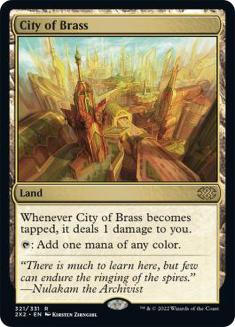
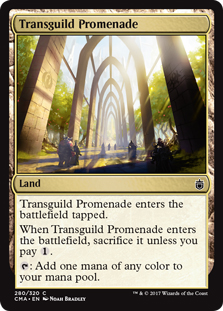
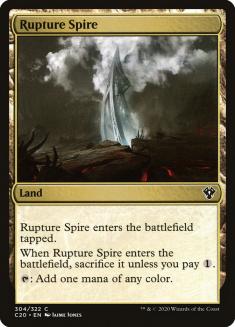
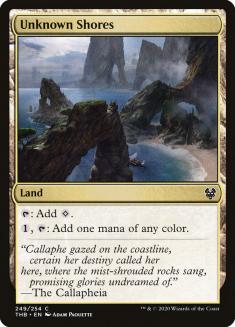
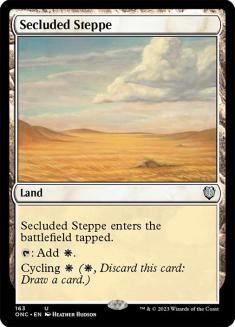
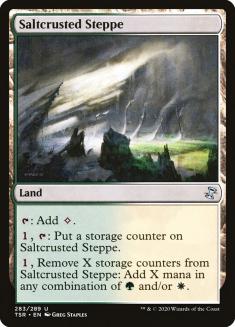
As noted above, go ahead and take out the Mana Confluence as well if you don’t already own it and have it earmarked for this deck; it’s better than City of Brass, yes, but not enough better that I am really enthusiastic about it. Half the reason I’m leaving it in is off the assumption that your average table will have someone play a copy of Urborg, Tomb of Yawgmoth, in which case it stops being a liability as you can now tap it for colorless without taking damage. You can slot in Reflecting Pool or Treva’s Ruins instead on top of the changes I’m making here and probably won’t even notice a difference in your average game, but if you already have it, I’d say go ahead and keep it.
I either like a lot of cycling lands or no cycling lands, and this deck looks a lot more like the latter. Ditto for Time Spiral chargelands–my new Sliver Queen Planeswalker-control deck was built specifically to play all five of them and like it, but this deck has a lot of cheap cards and can even replay its Commander as many times as it wants without ever having to pay an increased cost, so the late-game mana boost that comes from turn after turn of patient savings is not really how this deck is built to play. As to the rest, while they’re pretty cheap options as far as cost-of-cardboard is concerned, they can be downright expensive in your opening hand or at the start of a game–Transguild Promenade and Rupture Spire both require you to have another non-them, non-bounceland land before you can even play them as a land, while I just don’t expect our mana to be so bad that we’d want to put a whole extra mana into fixing it with Unknown Shores or its various brethren. We can build a much better manabase while still keeping it relatively cheap, and just playing the game of “complete the cycle!” by looking at your other lands and including the missing ones that do the same thing will give us much better mana than City of Brass and Rupture Spire are offering.
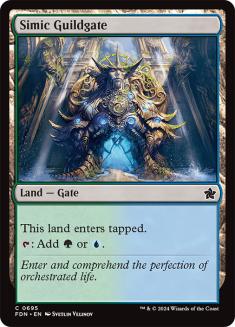
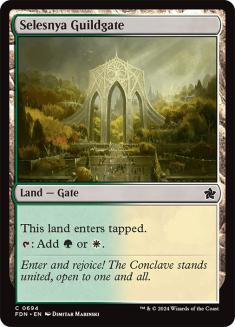
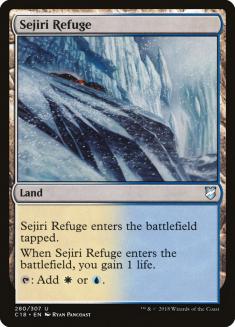
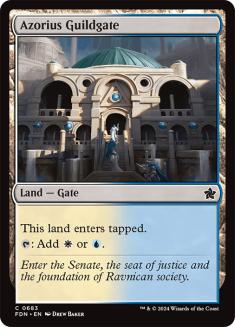
These are perfectly serviceable lands, but the simple fact is they’re likely to slow us down. We don’t have to get very expensive to have equally-solid dual lands that don’t come into play tapped, and considering how many of your Birds you’re hoping to play in the first few turns, I think it’s well worth replacing these with better dual lands.
IN:
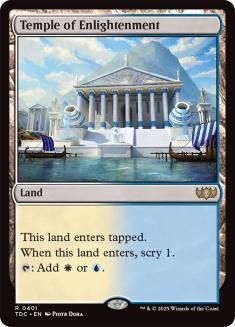
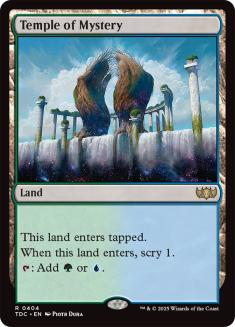
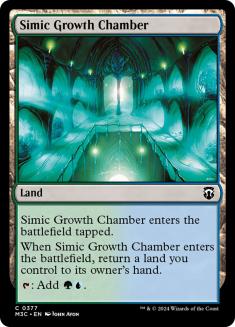
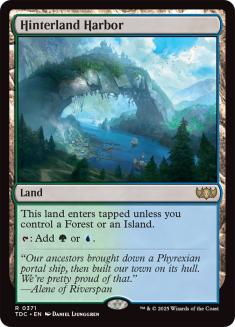
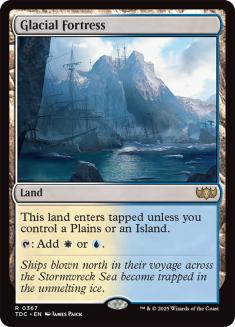
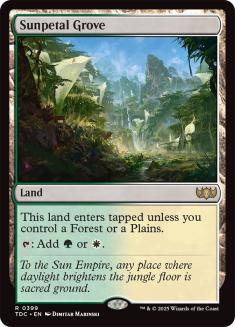
We start by playing “complete the cycle.” You had one Temple and two Ravnica bouncelands already, and I think the deck would be well-served by going up to three of each. Scrylands are just Guildgates with Scry 1 attached, but that is basically half of a Preordain stapled for free onto your land– it’s much stronger than it looks, and I expect these to have a long and happy future here in Commander. I am also a huge fan of bouncelands in this format, and noted that you had the Selesnya and Azorius bouncelands but not Simic, so we’ve added that as well.
The other three additions are cheap, but strong, dual lands–with pretty much any basic in play you’re likely to have them come into play untapped, and fifteen basics is a good chunk of your manabase, so we can expect these to provide mana hiccup-free on all turns past the first. They’d be better if we got a little spend-y and added Temple Garden, Breeding Pool and Hallowed Fountain, but this is by no means required for them to be better than the lands we’ve cut for them.

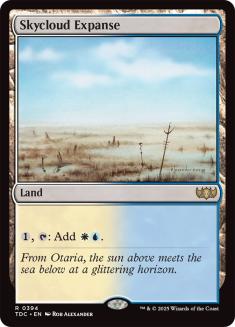
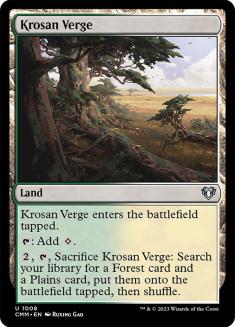
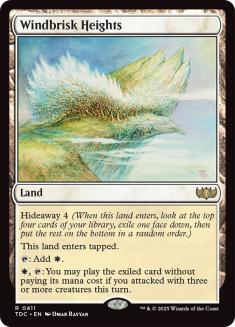
Odyssey Block was not exactly famous for its mana-fixing; if anything, it was famous for the opposite, as tales of Tarnished Citadels played in Constructed formats are still told to this day when evaluating just how bad we used to have it. But those tales neglect to mention that Tarnished Citadel was only played because the best two-color combination was an enemy-color pair; Odyssey Block actually has excellent dual lands for allied-color pairs, and I think you’ll be pleased to have Sungrass Prairie and Skycloud Expanse… I consider them to be even better than the hybrid-mana lands, and of course they’re also considerably cheaper to boot. Island + Sungrass Prairie is a fine start, which would not be at all true if we replaced Sungrass Prairie with Wooded Bastion… and since we don’t have that many double-colored mana costs in this deck, comparatively speaking, we won’t really miss that option when playing this deck.
The last two choices both come into play tapped, which is part of why I paid all of that attention to just how many of your lands come into play tapped in the first place. They pay you back much better than Rupture Spire and Transguild Promenade could have, however: each of these last two provides a clear spell-like benefit, with Krosan Verge playing a lot like the Peregrination I’m about to cut (spoiler alert: I think you picked it because of the name, not because your deck wants it) and Windbrisk Heights gives you a free spell just for accomplishing what already appears to be your deck’s Plan A, “attack with a lot of little fliers.” You may not have all that many expensive spells to cheat out with Windbrisk Heights, but I never look down my nose at a free card, and I think you’ll be just as happy with Windbrisk Heights even if it gets you a lowly Bird rather than a mighty Eldrazi. A free card’s a free card, after all, and getting a lot of Birds is your desired path towards pecking everyone to death.
We have just one more swap to make: having moved around all of these other lands, I really want to add another Forest to the deck, and think the best way to do so is by cutting an Island. So we’ll make that swap as well, just for color balance purposes.
For The Horde Birds
The really hard part about playing a Bird Tribal deck is how frankly underpowered your average Bird is compared to other creatures that are good in Commander. It’s hard to look at, say, Celestial Gatekeeper and think we’re getting a really good deal. That said, we have enough we can work with here so long as we shave some of the least-impressive Birds, and I’ve targeted these nine to be cut:
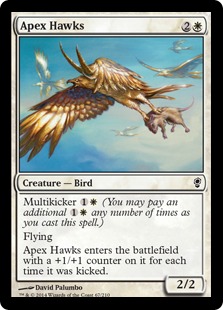
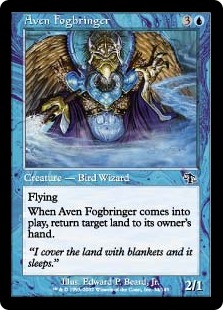
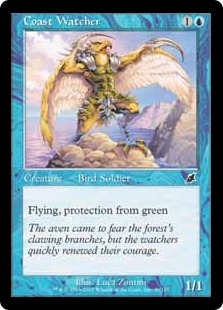
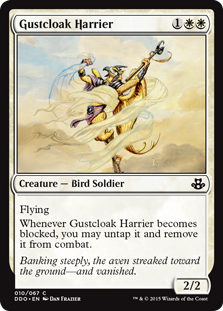
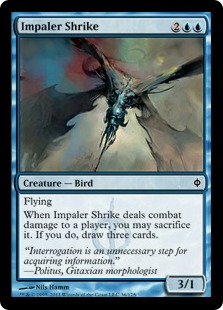
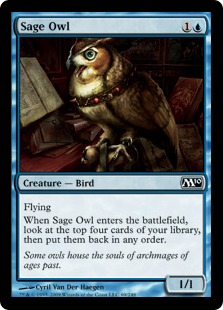
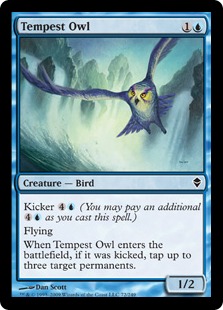
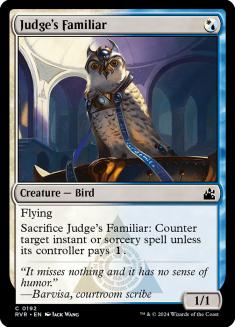
As far as power, toughness, cost, and abilities go, each of these leaves enough to be desired that we’re looking to replace them with something else. Four of these slots will remain Birds, two will turn into artifacts instead, and two will be Birds still if and only if you can conscience my cheating on the definition of what counts as a Bird: I think Changelings count, but for most people these jelly-faced animals aren’t fooling anybody and leave a lot to be desired. Still, they’ll be worthwhile on their own merits and have technical aptitude as part of the tribe in all zones, which is more than we can say of Adaptive Automaton and its failure to interact with Door of Destinies. That ninth cut comes from the fact that the deck as-received counted up to 100 cards, and we’ve got to make a cut to the deck in order to get it down to 99.
Let’s start with the jelly-faced disappointments: we’ll add Chameleon Colossus largely for its ability to dish out a large amount of damage with our other Bird-enablers working for us, and we’ll add Mirror Entity for its ability to function as quite an impressive Lord. When you’re swinging in for the attack, Mirror Entity lets you reset the base size of your creatures from their average size–which is about a 2/2–to “however much mana you want to spend on this,” which can mean 8/8 or larger in the later parts of the game. Once I knew I wanted to add Mirror Entity as another effective Anthem effect (and, um, replace Beacon Hawk no matter what), we added all creatures with Changeling to the existing Gatherer search for all creatures in Bant colors that count as Birds, and I decided seeing you kill someone with Chameleon Colossus and Soulcatcher’ Aerie was interesting enough to forgive the fact that it doesn’t fly and is clearly a pretender to the tribe. If sullying the purity of your Bird experience is too much to handle, well, these are suggestions, not dictates from on high–you ask for advice, not commit to make all of the changes that fall from their mouth as if they were a sum-package obligation.
The four real-tribe additions are Birds of Paradise, Thieving Magpie, Aven Cloudchaser and Mindshrieker. Birds of Paradise was added despite the lack of plentiful first-turn mana sources because it’ll still be good in the first few turns even if it’s coming off of a Temple or other tapland, and it’s about as iconic a Bird as you can find in this game. While it may not be a relevant topdeck on turn sixteen, the unfortunate fact is that’s also true of about half of the cards in your deck, so I see no reason to be especially concerned about that fact in this Bird’s case and not the others’.
Thieving Magpie is going in as part of a damage-turns-to-cards minor theme, letting us work on keeping that card-flow coming, while Aven Cloudchaser is card #3 of an already-existing set you’re already playing–I think Enchantment is one of the most-relevant card types to be able to affect, so each of these Birds is well worth playing on that merit alone as you try to keep the board working in your favor. And Mindshrieker is an oddball, it’s true, but it has the benefit of letting you potentially turn mana into damage–and potentially a lot of damage, thanks to the higher average casting cost of cards in Commander. Mindshrieker also has a lot of small but favorable interactions with cards that are played a lot in this format; trying to actually draw the card you want with your Sensei’s Divining Top becomes a little bit of a guessing game or an intriguing sub-game, and cards like Mystical and Vampiric Tutor become absolutely worthless instead of incredibly powerful–Mindshrieker flips them the, well, you know.
Let’s move on to the spells and round out the rest of this deck, as that’s where the big changes to how Derevi and her winged minions are going to be seen.
Fine Tuning
I have thirteen cuts to make, and fifteen additions thanks to the fact that the creatures section left us two slots. We’re still going to make creatures with those slots, so overall the deck’s balance should still come out approximately the same, but some of our other changes will have a much more dramatic impact overall.
OUT:
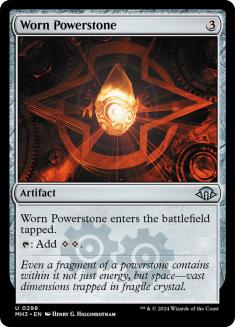
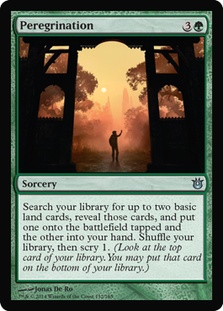
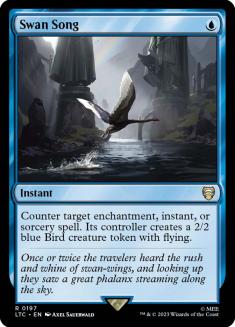
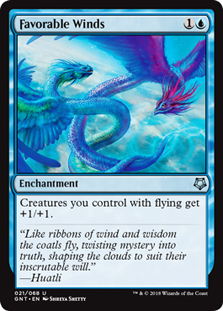
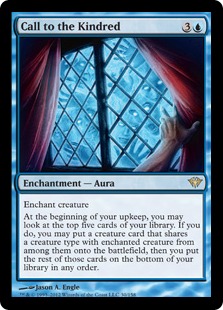
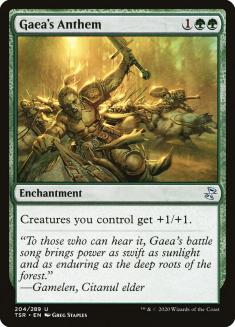
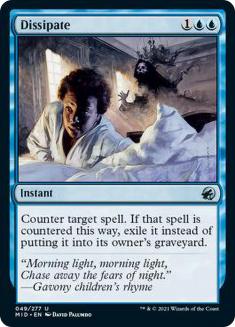
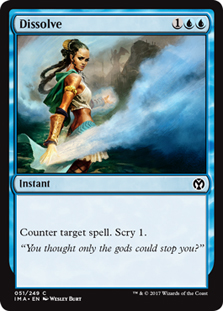
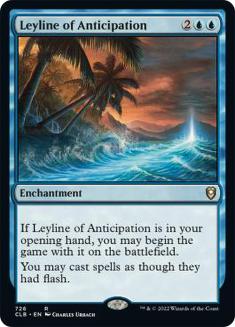
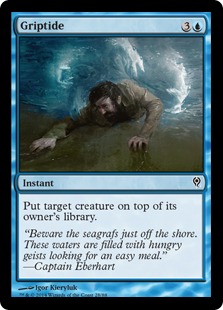
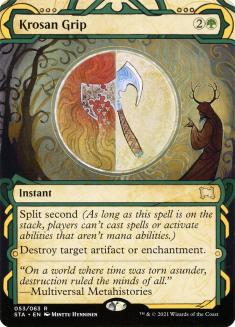
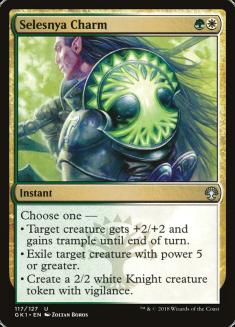
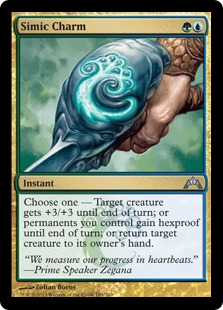
Rather than go into detail about all of these cards, we’re going to sum it up by saying that for the most part, each of these cards is being cut for their power level – we need a bit more power for our unit of cardboard invested, and that means trying to get more bang for our buck with each of these cards. Some of them were there because they were multi-purpose tools or because they interacted with the tribal elements of the deck, while others were seemingly present largely because their name tied in with the bird-theme of the deck…I really doubt Peregrination is anyone’s first choice for mana-fixing in Commander, and as good as Swan Song is, it doesn’t really fit the deck’s plan–it feels a lot like it’s forcing a theme, not defending your plays.
Adding back in, we’re going to paint broad swathes of your existing themes and desired places for improvement: making more Birds more often, building bigger and better Birds, and putting more cards in your hand. We’re also going to build alongside the vector of ‘make Derevi’s trigger more important to you’ and ‘be a better card in Commander,’ which is where you’ll see a few strict upgrades of one card to a nearly-identical card that has a Commander-niche impact that makes it stronger than the original even if the mana cost hasn’t changed at all.
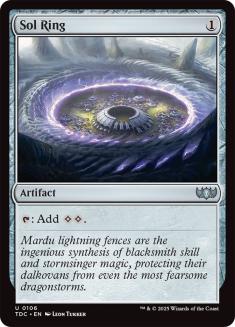
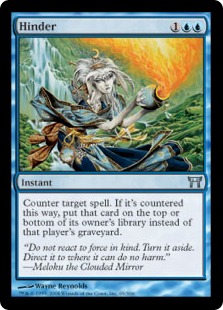
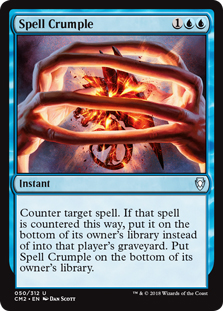
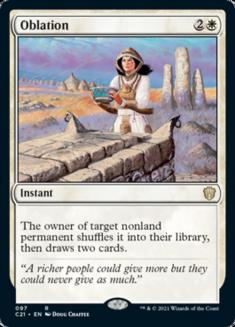
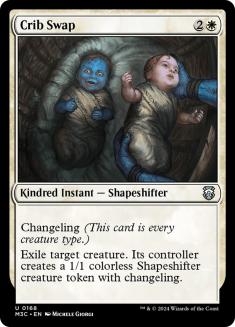
Our “Better In Commander” cards, each of these were added to replace a card you already played with a more-powerful version…we replace Worn Powerstone with Sol Ring, Dissipate and Dissolve with Hinder and Spell Crumple, and Krosan Grip with Oblation. We’re also sort-of replacing Selesnya Charm with Crib Swap off of my interpretation that the most-used mode is probably ‘Exile target creature,’ as I don’t think a 2/2 Knight gets you very far and your creatures are not really big enough to do much of anything with a pump effect that grants Trample.
Each of these swaps gives us a power upgrade while potentially taking opposing Commanders off the table forever, and in the case of switching Krosan Grip for Oblation we lose the Split Second insurance that protects us from countermagic but gain the ability to affect any nonland permanent instead, letting us take down a planeswalker or remove a creature in addition to the Disenchant-like effects we already had. And before you think the ‘draw two cards’ provision of Oblation is a downside, I find I often have a dead Disenchant effect in hand when I play them in any quantity, and having the ability to cash it in for two random cards when an opponent points a removal spell at something of mine is an ability I’ve often been glad to have. Giving one opponent two cards sounds like a bad thing, but in the grand cosmic scheme of things it’s really not, and it can also help soften the blow when you take down something really awesome or tuck their Commander–”not trying to stop you from playing your game, here, have some cards!” is a good way to play politics while solving problems.
Crib Swap is a weird card next to Commander powerhouses, but a) you really don’t care about a token creature if it doesn’t have flying, and b) having your removal spell trigger your Door of Destinies is more interesting than playing the “best” version of the card you could have in that slot instead. Yes, we could optimize in order to save two mana by playing Swords to Plowshares or Path to Exile, and we could even emphasize that “tuck” effect by playing Condemn instead, but you really want your Door of Destinies to do a lot of work when you draw it, so the removal spell having Changeling is the most intriguing choice as far as I’m concerned and I felt it was the more worthy inclusion here. Sorry if you really don’t like Changelings, but there aren’t any Tribal–Bird cards.
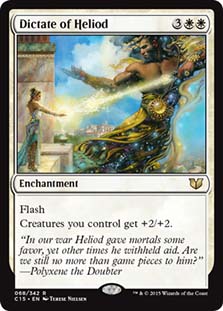
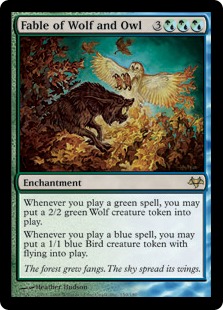
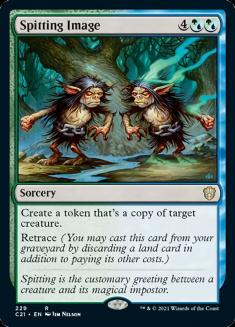
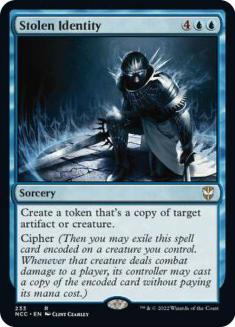
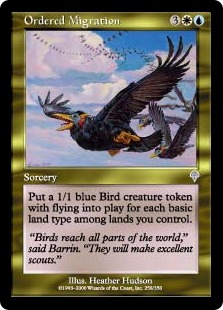
This is our “more and better Birds” category; we also added Mirror Entity as a Lord effect to make up for the fact that we cut one, and Dictate of Heliod is likewise better than the Gaea’s Anthem we are replacing for the simple and obvious fact that doubling up that effect is just better. Ordered Migration is another Bird token generator, able to make three Birds for five mana if you have one of each of your basics and able to make four if that is true and someone has Urborg in play, at which point we’re finally getting to a big enough effect to impress us–Battle Screech always makes four birds for four mana so long as you have one of the right friend in play to start with, we’re clearly cajoling this card a fair bit in order to get a serviceable effect out of it but the fact of the matter is simple: for Bird Tribal you don’t really have all that many options, so we’ll take what effects we can get.
Fable of Wolf and Owl is another way to make more token Birds, while Spitting Image and Stolen Identity can either work on putting more of our own best things into play or give us access to copies of the cards other people at the table may have while otherwise fitting in with our own desires to maximize our resources: Spitting Image lets us convert dead lands drawn later in the game back into action, while Stolen Identity uses the Cipher mechanic to generate a powerful effect…a mechanic whose optimization we’re already somewhat built around, as it triggers off of the same thing that triggers Derevi’s effect and thus they’re along the same vector already. Both of these cost a fair chunk of mana, but Spitting Image gives us a graveyard-oriented effect that smooths out our draws which we’d otherwise be entirely lacking and Stolen Identity should generally work twice in the turn you cast it and can potentially get cast for free once each turn thereafter if things are going well, so in this deck it’s well worth the admittedly higher price compared to the rest of your cards.
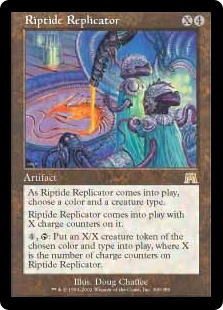
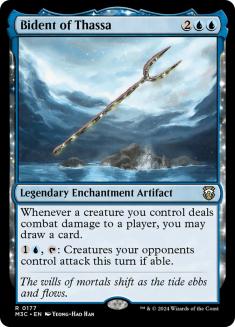
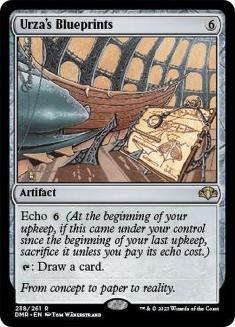
Here we work on the card-drawing theme and Bird-generation at the same time, but also start to dabble into the space of “things that work with Derevi’s trigger” as well. Bident of Thassa is a solid way to draw cards when you’re already planning on connecting with small attackers, and gets the nudge over Coastal Piracy for having an additional effect that may potentially come in handy every once in a while–I can’t even begin to tell you the number of times I’ve completely forgot about the other text on Bident and gotten severely punished for it, and that’s well worth being vulnerable to targeted removal for another card type that people don’t usually play pinpoint removal for. Urza’s Blueprints works like Bident of Thassa with Derevi online but also just taps to draw an additional card each turn; yes, paying the Echo cost is unattractive compared to something like Staff of Nin, but that’s what it takes to put a permanent in play that simply says “tap this to draw a card” and the potential to go a little bit crazy with this is actually pretty high.
And since we’re already going into that sort of space here, Riptide Replicator lets us make Bird tokens (yes, it is weird that they don’t fly, but we’ll get over it) and can potentially start to run away with things if our attacking Birds untap the Replicator and the mana we need to use it. We’re light enough on real, sizable Birds that I think playing the Replicator is worthwhile even if it does cut a little bit into the purity of the “Bird Tribe” theme here, and is no greater a sin than playing a jelly-faced critter or two alongside our feathered flock. The potential to actually make large creatures, and potentially several of them each turn, is too good to pass up as far as Derevi’s late-game plans are concerned.
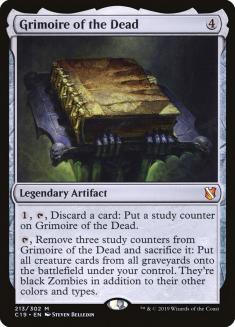
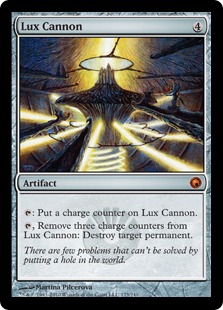
Our last two additions get to play considerably more into that space which is unique to Derevi, Empyrial Tactician here in this deck; with Derevi online we can fully charge up a Grimoire of the Dead the very same turn we cast it, multiple untap triggers stack after all, and so long as you have a few extra cards in hand to turn into study counters you can build your very own Rise of the Dark Realms thanks to the powers of Team Bird. Being able to have something unusual and powerful like this gives the deck the ability to craft a very different long-game against tough opponents than you’d otherwise have, as the people who play Kill All Monsters are already going to be very difficult for you to overcome (but this can help) and the people who play tons of huge monsters or operate a whole lot out of their very-stocked graveyard will find things are a lot more challenging when those things start playing for your team.
Lux Cannon is operating on a similar line of thought; you don’t have a lot of removal in this deck, but you do potentially have a lot of Derevi triggers that are otherwise going to middling effect just untapping a few lands or the occasional blocker. Turning each of those triggers into a part of a Vindicate is a lot more powerful than untapping a land would be, as it lets you turn a flock of Birds into a real and meaningful board-control mechanism. I always find Lux Cannon an interesting card to stick in weird places–it was on the cusp for my Proliferate-based Planeswalker deck but didn’t quite make it in since I was already very rich in removal effects–and I think this is the best “fair” thing you could do with Derevi online without bogging down or just breaking the game. It’ll give you a bit more strength with your Commander online that is otherwise lost since you’re not building around using or optimizing those combat triggers, but without that pesky problem that once you start to get even just a little bit ahead it’s impossible for anyone else to feel like they’re still in the game. It’s more cutesy than threatening, keeping it within your range for self-restraint in building your particular Derevi deck, but that doesn’t mean it won’t be awesome when you get it operational–when it works, it’ll be quite strong and fill in an element that you’re otherwise quite weak in.
Putting it all together, we get the following:
Creatures (32)
- 1 Birds of Paradise
- 1 Soulcatcher
- 1 Commander Eesha
- 1 Aven Brigadier
- 1 Thieving Magpie
- 1 Aven Cloudchaser
- 1 Keeper of the Nine Gales
- 1 Crookclaw Elder
- 1 Celestial Gatekeeper
- 1 Aven Warhawk
- 1 Gustcloak Savior
- 1 Glarecaster
- 1 Soraya the Falconer
- 1 Cloudchaser Eagle
- 1 Raven Familiar
- 1 Spire Owl
- 1 Sawtooth Loon
- 1 Kangee, Aerie Keeper
- 1 Lieutenant Kirtar
- 1 Major Teroh
- 1 Cloudchaser Kestrel
- 1 Mirror Entity
- 1 Chameleon Colossus
- 1 Windbrisk Raptor
- 1 Aerie Mystics
- 1 Messenger Falcons
- 1 Aven Mimeomancer
- 1 Augury Owl
- 1 Adaptive Automaton
- 1 Murder of Crows
- 1 Mindshrieker
- 1 Mist Raven
Lands (37)
- 3 Forest
- 6 Plains
- 6 Island
- 1 Sungrass Prairie
- 1 Skycloud Expanse
- 1 Seaside Haven
- 1 Krosan Verge
- 1 Selesnya Sanctuary
- 1 Azorius Chancery
- 1 Simic Growth Chamber
- 1 Terramorphic Expanse
- 1 Windbrisk Heights
- 1 Bant Panorama
- 1 Seaside Citadel
- 1 Glacial Fortress
- 1 Sunpetal Grove
- 1 Evolving Wilds
- 1 Command Tower
- 1 Hinterland Harbor
- 1 Cavern of Souls
- 1 Temple of Mystery
- 1 Opal Palace
- 1 Temple of Enlightenment
- 1 Temple of Plenty
- 1 Mana Confluence
Spells (30)
- 1 Hinder
- 1 Sol Ring
- 1 Darksteel Ingot
- 1 Soulcatchers' Aerie
- 1 Mirari's Wake
- 1 Riptide Replicator
- 1 Oblation
- 1 Harsh Mercy
- 1 Airborne Aid
- 1 Urza's Blueprints
- 1 Ordered Migration
- 1 Battle Screech
- 1 Crib Swap
- 1 Distant Melody
- 1 Door of Destinies
- 1 Fable of Wolf and Owl
- 1 Spitting Image
- 1 Flurry of Wings
- 1 Marshal's Anthem
- 1 Lux Cannon
- 1 Blue Sun's Zenith
- 1 Spell Crumple
- 1 Grimoire of the Dead
- 1 Cyclonic Rift
- 1 Stolen Identity
- 1 Beck
- 1 Bident of Thassa
- 1 Spear of Heliod
- 1 Unexpectedly Absent
- 1 Dictate of Heliod

As always, you will receive a $20 coupon for the StarCityGames.com store to put towards completing this deck–a good chunk of the price here is in the mana base and a few Commander staples like Sol Ring, and the most-expensive addition carries that price solely because of how good that card is in Standard. I’ve kept it under $80 but would have had to make some compromises I didn’t want to in order to keep it below that point, like losing the M10 cycle of duals and keeping the Guildgates when I consider the buddy lands to be by far the superior lands for the job or keeping the Guildgates and dropping the Temples. Those are still choices you can make if you don’t want to invest in the mana base–after all, the difference between the most-expensive addition to your deck and your Azorius Guildgate is just Scry 1, and it would be perfectly respectable to prioritize the cheaper changes first as you go about altering the deck. If you do have access to the Ravnica dual lands here, they’d be better than the cycle of Temples, and I could get behind replacing those three entirely with the Ravnica duals if you wanted to optimize your mana base at a somewhat higher price-point. There’s a lot of give-and-take here, but also a lot of flexibility, so a lot of these are suggestions rather than ‘requirements’ by any measure–three-color mana bases are pretty easygoing and forgiving, after all, and the amount of improvement per additional dollar spent is considerably lower in the mana base than it is in the rest of the deck.
Breaking it down by price, they came down as follows:
| Forest | 0 |
| Aven Cloudchaser | 0.15 |
| Ordered Migration | 0.25 |
| Thieving Magpie | 0.25 |
| Mindshrieker | 0.49 |
| Stolen Identity | 0.49 |
| Urza’s Blueprints | 0.49 |
| Bident of Thassa | 0.75 |
| Dictate of Heliod | 0.75 |
| Crib Swap | 0.99 |
| Krosan Verge | 0.99 |
| Grimoire of the Dead | 1.49 |
| Oblation | 1.49 |
| Riptide Replicator | 1.49 |
| Simic Growth Chamber | 1.49 |
| Spitting Image | 1.49 |
| Lux Cannon | 1.99 |
| Mirror Entity | 1.99 |
| Spell Crumple | 1.99 |
| Chameleon Colossus | 2.99 |
| Fable of Wolf and Owl | 2.99 |
| Glacial Fortress | 2.99 |
| Hinder | 2.99 |
| Sungrass Prairie | 2.99 |
| Sunpetal Grove | 2.99 |
| Skycloud Expanse | 3.49 |
| Temple of Mystery | 3.49 |
| Birds of Paradise | 3.99 |
| Hinterland Harbor | 5.99 |
| Sol Ring | 7.99 |
| Windbrisk Heights | 7.99 |
| Temple of Enlightenment | 9.99 |
I think this addresses all of your major needs while still keeping the flavor and fun of a Bird-themed Commander deck intact; I’m reasonably confident you’ll win more games with it (but not so many that your Derevi-centered deck becomes oppressive to your playgroup as so many other Derevi builds inevitably do) and I think it’ll do a few interesting new tricks as well, just enough to give the deck a few unexpected surprises that paint outside of the otherwise fairly-linear Bird Tribal box that comes from picking a minor tribe to work around and seeing where it goes. Tribal lords and Anthems are a solid but straightforward way to come at any Commander deck, so I think being able to throw a few curveballs and play in a different way sometimes will be worthwhile–in games where your Plan A isn’t really effective, like against a ton of lifegain, being able to operate on a different angle will work far better than pressing ahead full-throttle with an optimized Plan A anyway.
— Sean McKeown
Want to submit a deck for consideration to Dear Azami? We’re always accepting deck submissions to consider for use in a future article, like Jordan’s Arcum Dagsson deck or Sean’s Rafiq of the Many deck. Only one deck submission will be chosen per article, but being selected for the next edition of Dear Azami includes not just deck advice but also a $20 coupon to StarCityGames.com!
Email us a deck submission using this link here!
Like what you’ve seen? Feel free to explore more of Dear Azami here, in the Article Archives! Feel free to follow Sean on Facebook… sometimes there are extra surprises and bonus content to be found over on his Facebook Fan Page, as well as previews of the next week’s column at the end of the week! Follow Cassidy on his Facebook page here, or check out his Commander blog–GeneralDamageControl.com!

